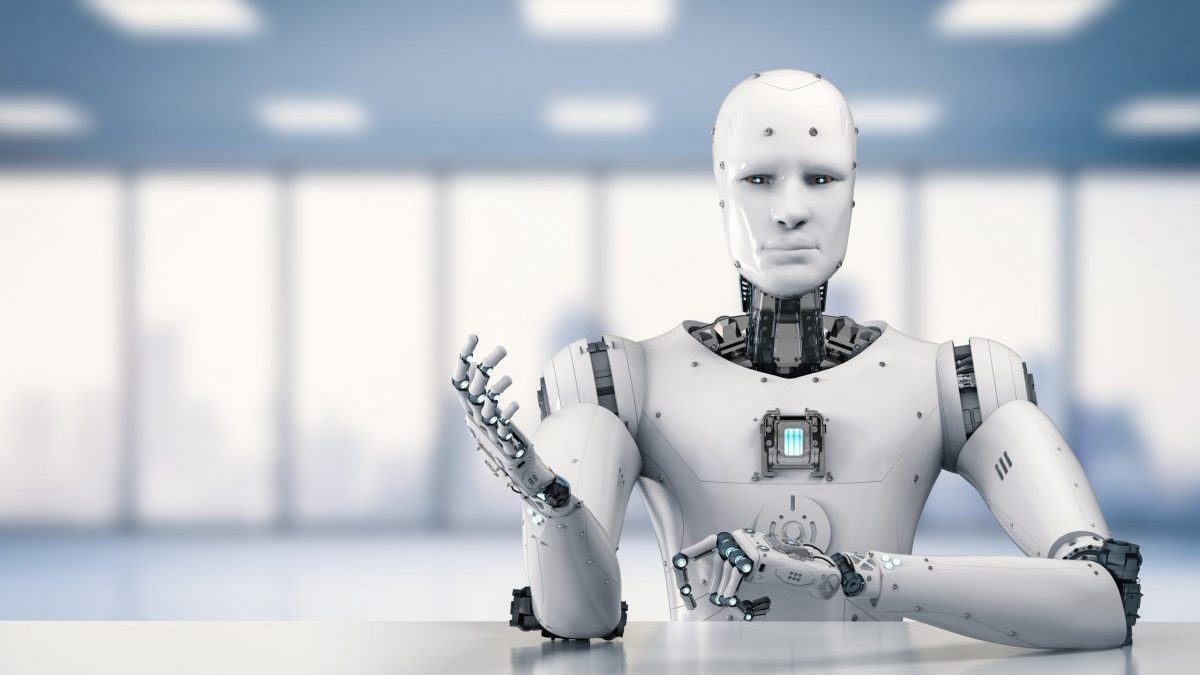Here’s a little background about the newest addition to modern productivity, Rob the cobot. Don’t be insulted if he won’t go with you to lunch. And to give you a heads-up, he’ll never take a break or have a stomach ache. He won’t be late to work, and he is a bit of a workaholic. His favorite drink, WD-40, is not so tasty but keeps his joints well-oiled. We’re happy he’s here because he’ll revolutionize productivity on the Factory Floor.
As the average manufacturing worker ages, there are some limitations in their ability to continue to do the heavy lifting required to do their jobs, as well as walk miles across the factory floor every day to pick up products. Rob can help with all that.
We caged industrial robots historically, not to keep them from escaping, but to keep humans out. The industrial robots lifted huge pieces of equipment (think cars) and were not sensitive enough to notice if a human was in the way. Manufacturers relied on cages to keep their employees safe.
To understand how cobots (collaborative robots) and industrial robots differ is simple – cobots work alongside human employees, while industrial robots do work in place of those employees. Cobots reduce the fear of being replaced and become a trusty assistant to take the load off their human coworkers.
The newest cobots have sensors that can recognize objects like a human being and navigate around them. What happens when a worker accidentally bumps into a cobot? It will either stop or move its arm or gripper the other way. The new sensor technology gives freedom to move around the factory with the ability to detect movement within a certain radius. At last, robots can work beside humans, do all the heavy lifting, and not mistake them for a part to rivet.
How can cobots benefit your organization?
- Cobots can help to operate multiple production lines and adapt to different orders based on selected raw materials.
- Human production workers will no longer need physical strength to do their jobs.
- Factory equipment will become increasingly digitized to make use of the data collected at each stage of the production process.
- Data analysis in the smart factory model will trigger automatic adjustments with no human intervention in order to minimize the risk of damage or to speed up the production process.
- Cobots are lighter, less expensive, and more useful than robots. They can work beside humans in a shared workspace. They can operate with limited guidance or completely autonomously.
- Several robot/cobot manufacturers are working on ‘cloud robotics,’ which offer the promise to allow the supplier to automate the performance with no need for involvement by the manufacturer.
According to Loup Ventures, a venture capital firm focusing on technology innovations, by 2025, cobots will account for almost 35% of industrial robots and exceed $9 billion in market value. The improvement in capabilities and the decrease in prices are contributing factors to accelerate growth in the industry.
How are manufacturers responding to the trends? Many manufacturers are acquiring companies that bring valuable tools for collecting and analyzing data to their organization. In the meantime, the Internet of Things (IoT) software companies may offer services such as predictive maintenance, directly competing with equipment manufacturers.
So, if you find yourself working next to Rob on the factory floor in the future, consider yourself fortunate, as he will help you to get more done with less effort. Just don’t expect him to eat lunch with you. J
Has your manufacturing company embraced cobots yet? Please comment below and add your examples of innovations that you use on the factory floor to boost productivity.
About the author: Qixas Group is a leading Microsoft certified partner for the Dynamics ERP Community. We focus on making everything your business does easier with technology. Our team of senior professionals has improved productivity and profits for over 1500 Dynamics customers www.qixas.com
For more ways to boost productivity in manufacturing, check out our prior blog, What You Wear On the Factory Floor Matters.


